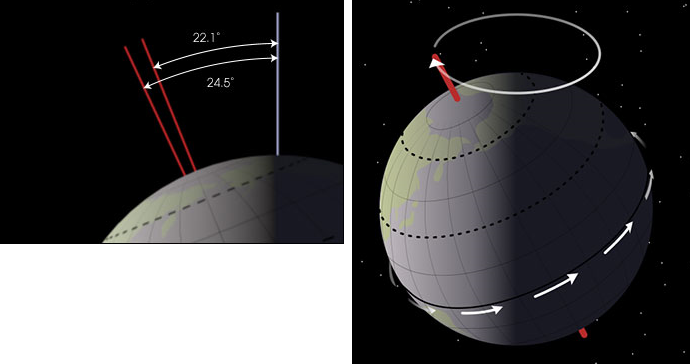axial tilt
The axis of the earth is not perpendicular to the plane through the elliptical earth's orbit. It's tilted by an angle of 23,5°. The consequence is that through the year a different part of the earth is tilted towards the sun, which explains the seasons.
If the north pole it tilted towards the sun, it's summer on the northern hemisphere and winter on the southern.
Drg the centre of the earth along its orbit around the sun and see how the axial tilt correspond with the succession of the seasons.
axial tilt
During a period of some 40 thousand years, the axial tilt varies between 22,1° and 24,5°. A greater angle means a greater contrast between the seasons on earth, warmer summers and colder winters. A smaller angle means colder summers and milder winters.
The axis of the earth describes a full circle within each 26 thousand years. Nowadays it's summer on the northers hemisphere when the earth is in the aphelion, so on its farthest point to the sun. For a summer in the perihelion we have to wait for another 13 thousand years. This effect is called precession.
